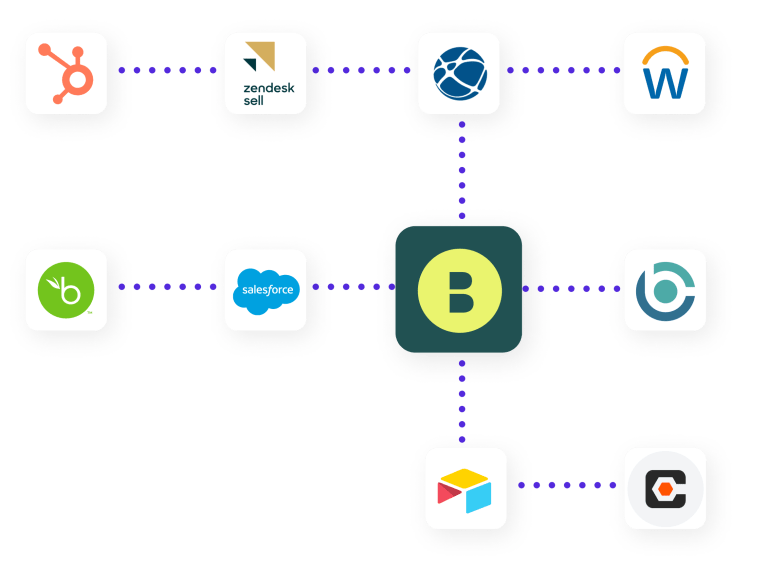Commercial mechanical contractors are involved in the coordination of multiple trades on construction projects. Mechanical contractors also need to be aware of time and budget constraints as they are often a smaller piece of the larger puzzle. Finishing mechanical elements late or over budget can have a snowball effect that can quickly impact other trades and the project as a whole.
Table of Contents
While mechanical contractors will self-perform work, some project elements might require a third-party subcontractor. Scheduling and coordinating with these trades in line with their own workers can amplify the complexity of managing multiple resources on-site.
On top of managing subcontractors, commercial mechanical contractors are also responsible for managing their self-perform workforce, task delegation, and actively monitoring resources. With so many people moving on any project, it’s no wonder mechanical contractors are moving away from manual workforce management systems like spreadsheets and whiteboards.
According to the AGC, 81% of contractors have difficulty filling salaried and hourly craft positions, with 72% saying that will be their biggest challenge in 2021. With this skilled labor shortage, contractors must make a concerted effort to maximize the productivity of their current workforce and leverage their data to make a predictive but adaptable workforce strategy.
Bridgit Bench, the leading workforce management solution, is helping mechanical contractors streamline their workforce planning and scheduling processes. Bridgit Bench also provides insights to help drive decision-making on active projects and forecast future project demand to keep project planning proactive instead of reactive. For more information about mechanical contractors, read this article.
In this article, we’ll explore how Bridgit Bench is helping mechanical contractors get the most out of their team with adaptive scheduling, accurate forecasting, and improved collaboration.
How Bridgit Bench helps mechanical contractors manage their team effectively
ADAPTIVE SCHEDULING
Construction can often fall into the “survival of the fittest” trap. Contractors will consistently try to put their best project teams forward to provide optimal results and separate themselves from their competitors.
“It is not the strongest of the species that survives, nor the most intelligent; it is the one most adaptable to change.” — Charles Darwin
In a business sense, evolution tends to reward the companies most capable of adapting to change instead of the ‘fittest’. Whether it’s environmental, economic, or any number of changes that can impact a construction project, being able to adapt (and adapt quickly) to these changes is one of the best ways for a contractor to distance themselves from the competition.
Bridgit Bench, the leading workforce management solution for the construction industry, helps do that. Effective workforce management answers two very important questions.
- Who is available for work?
- Which projects need more resources
Adaptive workforce management helps answer those questions, but most importantly, it helps when changes occur. Whether it’s project or phase delays, change orders, or any of the complications brought on by COVID-19, the ability to quickly adapt helps contractors ensure they’re still delivering quality work on time.
A key to adaptive scheduling is also understanding the impact of change on other projects. Shifting schedules and allocations on one project can cause overlaps or resource gaps on another. Adaptive scheduling not only helps to adapt to change, it also helps to prevent that change from impacting the rest of the project pipeline.
ACCURATE FORECASTING
Accurate forecasting helps mechanical subcontractors create optimal resource strategies. It’s like taking a time machine to any point in your company’s future better to understand project demand and your supply of available workers. The benefits of accurate forecasting include:
- Informed recruitment strategies – Insight into utilization rates and workforce availability can help shift from a reactive to a proactive recruitment strategy. According to Glassdoor, it costs roughly $4,000 to hire a new employee and takes upwards of 50+ days to fill a position. Accurate forecasting gives your team the time to hire the right people at the right time. For more information about forecasting, read our guide.
- Optimized capacity planning – Optimized capacity planning is crucial to success during a skilled labor shortage. Insight into your team’s utilization in the coming months and years helps to ensure you’re always operating at a high level and getting the most out of your team. For more information about capacity planning, check out this blog.
- Reduced costs – Accurate forecasting helps mechanical contractors analyze and better predict expected costs. This allows for more accurate resource quotas and budgets to be developed not to mention the impact an optimized workforce and informed recruitment strategy can have on your bottom line.
IMPROVED COLLABORATION
As mechanical contractors are involved in coordinating with different trades, high-level collaboration is key to the success of a project. While collaboration aims to increase the likelihood of project success, that goal can be broken down into several smaller benefits that can help improve efficiency and productivity. Some of the benefits of a collaborative planning process include:
- Reduced pressure – An individual team member will often be tasked with resource allocations, preparing workforce data, and creating reports. Collaboration helps alleviate the pressure on that team member and allows them to spend that time on more productive tasks. This article from the Harvard Business Review explores the idea of collaborative leadership.
- More productive meetings – A lot of time in workforce meetings is used to update the team on active and high-priority projects. Enabling team collaboration will mean increasing the accessibility of your workforce strategy. This transparency leads to proactive information sharing during meetings and less time getting everyone up to speed.
- Improved flexibility – Collaboration helps to improve your team’s ability to manage sudden changes in project scope. Teamwork helps mechanical contractors better adapt their workforce strategy to the dynamic nature of a project-based industry.
Bridgit is the leader in workforce intelligence. Our flagship software solution, Bridgit Bench, provides actionable insights and forecasting to ensure mechanical subcontractors and general contractors get the most out of their team and drive efficiency across the organization. Bridgit Bench is updated in real-time and also has a mobile app. For more useful tips and information, visit our blog.




